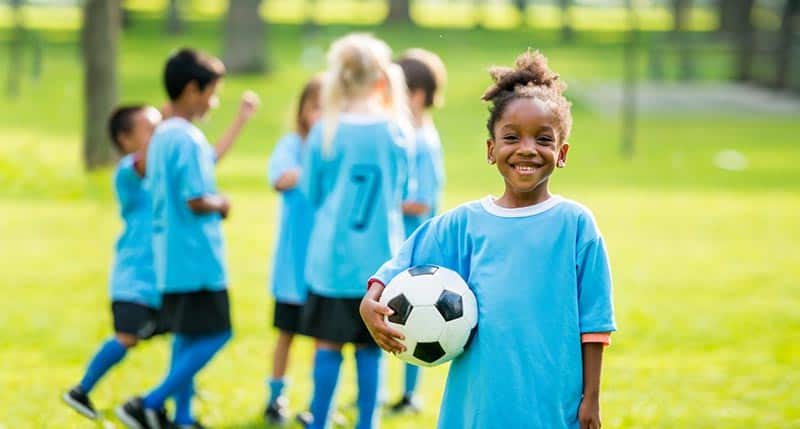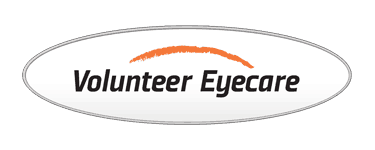
17 Sep 9 Critical Visual Skills for Student Athlete Success
9 Critical Visual Skills Student Athletes Need to Perform Their Best
It’s that time of year again! Back-to-school means back-to sports—and competition is ramping up for exciting seasons of football, soccer, baseball, basketball, golf, and tennis, plus any number of other individual and team sports that require talent AND good vision!
Most sports are fast-moving, and the pace of action requires multiple demands on the eyes. Each of the visual skills listed below play an essential role in enabling your student athlete to enjoy and perform their chosen sport to the very best of their ability.
9 Visual Skills Needed in Sports
- Wide field of vision: The area of space an athlete sees when gazing in one direction – with both eyes combined, it is nearly 180 degrees!
- Effective eye-hand-foot coordination: Informs body movements using the eyes to measure optimal timing and body control.
- Clear distance vision: Allows perception and visual processing in order to react swiftly and accurately to objects at a distance.
- Good depth perception: Aids your athlete in judging the distance between themselves and an object, opponent, or teammate.
- Visual acuity: How sharp and clear an athlete’s distance and up-close vision is.
- Dynamic visual acuity: Maintaining visual clarity when an object is in motion – like a tennis ball or football.
- Eye tracking: The ability of the eyes to locate and follow a moving object – like a basketball or hockey puck.
- Peripheral vision: Clear vision at the far corners of the visual field enables athletes to be aware of other athletes on the move, changes on the field, and to their surroundings.
- Accommodation: The ability to change focus from distant to closer targets.
As you can see, it’s not only 20/20 visual acuity that athletes require. There are a variety of eye teaming and functional visual skills that must all work well together for an athlete to perform their best.
Changes in Your Child’s Visual Ability
If your athlete is a tween or young teenager, they will soon experience puberty — the second phase of development in their young lives when almost every aspect of their body and its functions change. With puberty comes a surge in hormones that causes rapid growth. This growth affects every system in the body — including the eyes and visual system!
During growth spurts, the shape of the eyeball can lengthen, causing the cornea or lens to become misshapen. That makes light bend differently as it enters the eye and causes it to miss its ideal target on the retina. The result? A visual change called myopia or “nearsightedness.” That’s when objects in the distance become fuzzy or difficult to see. Approximately 50% of the global population will experience nearsightedness at some point in their life!
A lengthening of the eyeball can also cause astigmatism, resulting in blurred vision that can make it difficult to see both up-close objects as well as those at a distance.
Both of these conditions are called refractive errors and are the most common visual problems students experience. They can even have both conditions simultaneously. The good news is that your optometrist can successfully treat both conditions with prescription eyeglasses, contact lenses, or protective eyewear.
Prescription lenses correct refractive errors by focusing light directly onto the retina. This correction allows your athlete to see well and react accordingly when participating in their sport.
How to Spot a Visual Challenge in Your Student Athlete
So, what can tip you off that your athlete is having vision issues? Ask yourself these questions:
- Are they underperforming compared with previous seasons?
- Do they consistently swing late at pitches?
- Are they hitting the front rim of the basketball hoop almost every time?
- Do they miss thrown balls, or miss their target when throwing balls?
Visual changes can occur without your child noticing because the change is so gradual. As a parent, grandparent, relative, or close friend, you could be the first to realize that a change in performance may be vision-related.
Even though your child passed a school visual screening and has 20/20 visual acuity, it does not mean that no vision problem is present!
School vision screenings are not the same as a comprehensive eye exam with your optometrist. Vision challenges such as eye focusing, eye tracking, and eye coordination can also significantly affect a student’s performance in sports as well as in the classroom. A comprehensive eye exam by your optometrist can detect these vision issues.
Signs Your Student Athlete May Have a Visual Problem
Be on the “lookout” for vision problems and symptoms that your child may experience that can impact athletic performance:
- Difficulty seeing objects at a distance
- Squinting
- Frequent headaches
- Eyestrain characterized by redness, itching, rubbing, or blinking
- Difficulty seeing at night under outdoor stadium light glare
- Being less excited about playing their favored sport
- Over or underestimating the distance of balls or players on the field
- Shies away from thrown balls or consistently misses hitting, catching, or kicking balls
If you notice some of these signs, there’s an easy way to address them: Call us to schedule your student athlete’s comprehensive eye exam. Your optometrist will thoroughly examine and diagnose any eye problems your child may be experiencing to ensure that their vision is optimal to achieve excellence both on the playing field and in the classroom.
That’s the “goal” — right? We’re here to help, support, and cheer your athlete on to their top level of performance!



Sorry, the comment form is closed at this time.